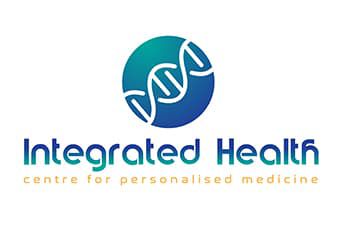

Have you ever experienced that nagging muscle pain that just won't budge? Perhaps you've looked into treatment options and come across terms like "myotherapy" and "myofascial release therapy." With their similar-sounding names (both using the prefix 'myo', referring to muscle), it's easy to get confused about which might be right for your specific needs.
I remember chatting with a physiotherapist friend who laughed when I used these terms interchangeably. "They're cousins, not twins," she explained. Let's break down the differences and similarities between these two popular therapeutic approaches that are increasingly sought after in Australia.
What exactly are they?
These complementary yet distinct therapies target different aspects of muscle and connective tissue pain.
Myotherapy is a manual therapy focused primarily on assessing, treating, and managing musculoskeletal pain. It's particularly effective for those knotted muscles that cause persistent discomfort. A qualified myotherapist employs a range of techniques to address both acute and chronic pain conditions.
Myofascial release therapy, on the other hand, specifically targets the fascia—that intricate web of connective tissue that surrounds and penetrates virtually every structure in your body. Think of fascia as a three-dimensional spider web that envelops your muscles, bones, nerves, and organs. When healthy, it's flexible and fluid, but stress, injury, and poor posture can cause it to become tight and restricted.
Key differences in approach and techniques
While both therapies aim to relieve pain and improve function, they differ in their primary focus and the techniques employed:
Myotherapy techniques:
- Trigger point therapy (addressing those specific 'knots' in muscles)
- Dry needling (similar to acupuncture but targeting muscle trigger points)
- Deep tissue massage
- Joint mobilisation
- Cupping therapy
- Specific stretching protocols
- Rehabilitative exercises
Myofascial release techniques:
- Sustained pressure and stretching to release fascial restrictions
- Rolfing (a systematic approach to restructuring the body's connective tissue)
- Indirect techniques that follow the path of least resistance
- Direct techniques that engage the restrictive barrier
- Integration of movement awareness
- Postural re-education
- Yoga-inspired stretching approaches
As the Australian Myotherapy Association notes, myotherapy tends to be more focused on specific pain points and muscular issues, while myofascial release often takes a more holistic approach to the body's connective tissue system.
When might you choose one over the other?
Choosing between these therapies often depends on your specific condition:
| Consider myotherapy for: | Consider myofascial release for: |
|---|---|
| Specific muscle pain | Widespread stiffness and restriction |
| Sports injuries | Postural issues |
| Trigger points and muscle knots | Chronic pain conditions |
| Headaches related to neck tension | Recovery from surgery or trauma |
| Acute muscle strains | Improving overall movement patterns |
According to research from the University of Queensland's RECOVER Injury Research Centre, myofascial release therapy has shown promising results in randomised controlled trials for neck pain conditions, with one study reporting a "greater effect of myofascial release in improving the cervical range of motion and quality of life than manual therapy."
This suggests that while myotherapy may provide more immediate relief for acute pain conditions through its targeted approach, myofascial release techniques could offer more lasting benefits for chronic conditions by addressing the entire fascial network.
Practitioner qualifications in australia
In Australia, the qualifications for these practitioners typically follow different paths, though there is some overlap:
Myotherapist qualifications:
- Usually begins with Certificate IV in Massage Therapy Practice
- Advances to an Advanced Diploma of Remedial Massage (Myotherapy)
- Must be from a Registered Training Organisation (RTO)
- Registration with professional bodies like Massage & Myotherapy Australia (formerly AAMT), which represents over 8,600 qualified practitioners nationwide and ensures members maintain high professional standards
Myofascial release therapist qualifications:
- Often starts with massage therapy qualifications
- Specialised training in myofascial release techniques
- May come from various backgrounds including physiotherapy, osteopathy, or massage therapy
- Continuing education through specific myofascial release workshops and courses
It's worth noting that many practitioners are trained in both approaches and can incorporate techniques from each depending on your specific needs.
The Australian Traditional-Medicine Society recommends checking that your practitioner is registered with a recognised professional association, regardless of which modality you choose.
The therapeutic experience: what to expect
If you've never experienced either therapy, you might be wondering what a session actually involves.
With myotherapy, you can expect a thorough assessment followed by targeted treatment. The therapist will likely use their hands, elbows, or specialised tools to apply pressure to specific trigger points. It can be quite intense at times—that "good pain" sensation that suggests something beneficial is happening. Your myotherapist might also incorporate dry needling if appropriate, which can create a brief twitch response in the muscle being treated.
Myofascial release sessions tend to involve slower, more sustained pressure. The therapist may hold certain positions for several minutes, allowing the fascia to gradually release and reorganise. It's not usually as intensely painful as trigger point work, but you might experience a stretching or warming sensation as the tissues respond. The pace is generally more meditative, and you may be asked to breathe into areas of restriction.
Which one should you try?
The truth is, many Australians benefit from both therapies, either in combination or at different stages of their healing journey. As my physiotherapist friend puts it, "It's not about which one is better—it's about which one is better for you right now."
If you're dealing with specific, identifiable muscle knots and pain points, myotherapy might be your first port of call. If you're experiencing more generalised stiffness, postural issues, or want to address patterns of movement and tension throughout your body, myofascial release therapy could be more appropriate.
The best approach? Have a conversation with potential practitioners about your specific concerns and goals. Many therapists in Australia now offer initial consultations where you can discuss your needs before committing to a full treatment session.
Whatever you choose, addressing muscle and fascial issues can be an important component of maintaining mobility and managing pain—particularly as we navigate the increasingly sedentary aspects of modern Australian life.
Originally published on May 06, 2025








